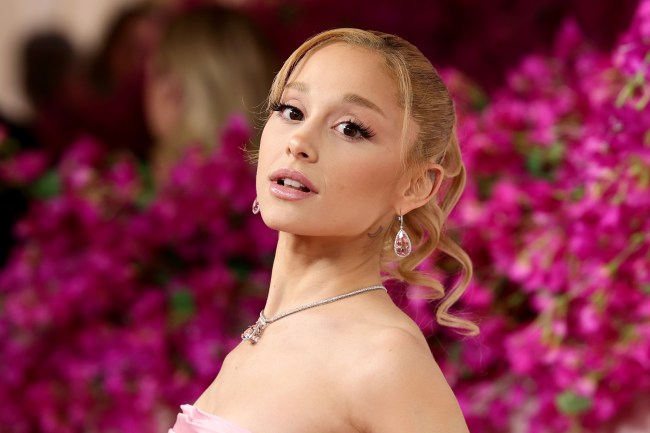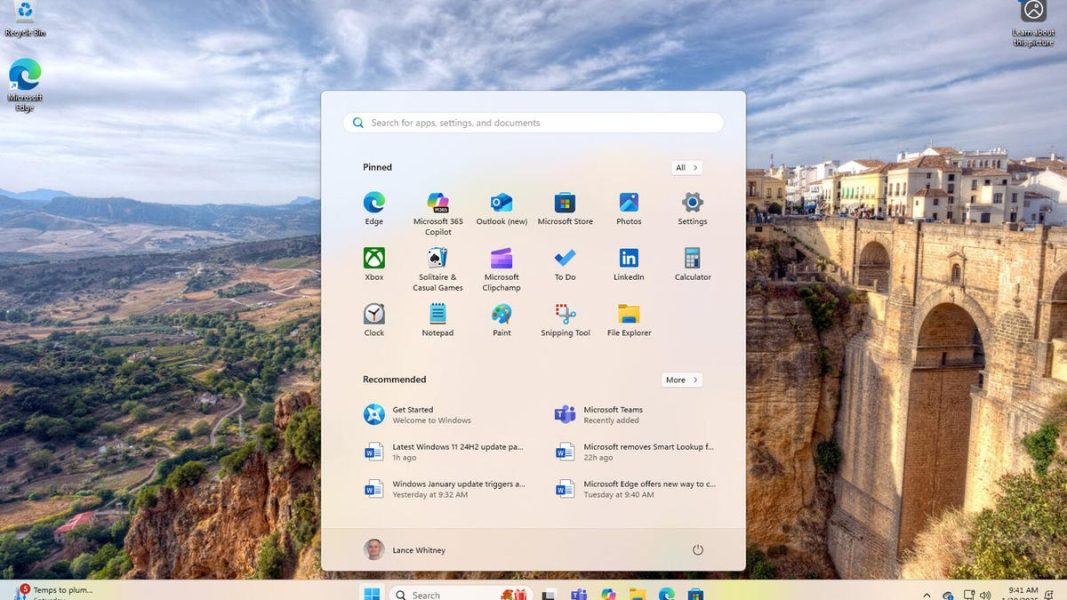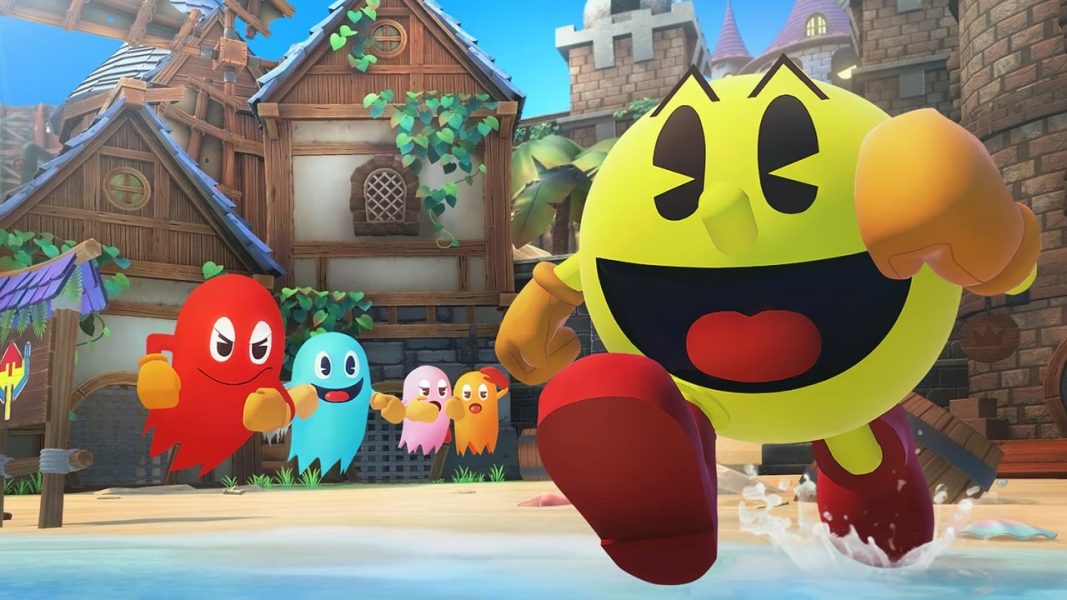Ariana Grande Gets Granular About Her Oscar-Nominated Performance as Galinda in ‘Wicked’ – IndieWire

By providing your information, you agree to our Terms of Use and our Privacy Policy.
We use vendors that may also process your information to help provide our services. This site is protected by reCAPTCHA Enterprise and the Google Privacy Policy and Terms of Service apply.With the “Wicked” press tour becoming a production of its own, star Ariana Grande has had plenty of opportunities to convey the gravity of playing Galinda in the film adaptation of the blockbuster Broadway musical. But she’s had few chances to nerd out about the array of technical elements that went into her performance. So when given a moment to discuss how she reformed her singing voice from pop-R&B superstar, past her Broadway baseline, into a full-on coloratura soprano, the Oscar nominee literally jumped at the chance to take to the whiteboard of a medium-sized conference room within the IndieWire office to draw an illustrative diagram of her vocal cords.
Related Stories 2025 Oscars: Best Animated Short Predictions ‘On Swift Horses’ to Close SXSW 2025 Before that came a conversation on her opening song, “No One Mourns the Wicked,” set in the direct aftermath of “The Wizard of Oz.” Her character has already dropped a vowel from her name to become Glinda the Good Witch, and is putting up a front to mask her true feelings about the death of the so-called Wicked Witch of the West. Grande explained that her homework going into production was “to make sure that my voice was in the place by the time I got to set, where the singing was second nature, where worrying about that operatic sound being available to me was not a question and not a worry, so that it could be about the emotional integrity of what’s happening in the scene.”Though audiences new to the musical adaptation of Gregory Maguire’s 1995 novel “Wicked: The Life and Times of the Wicked Witch of the West” are not yet privy to the layers of emotion on display in the scene, and won’t fully be until the release of “Wicked: For Good” this fall, Grande felt a huge responsibility to honor “everything that Galinda is going through at that time,” she said. “That’s why I treated the vocal training as seriously and as intensely as I did, because the emotional arc, and journey, and colors to that scene — there’s so much going on. So that was what I wanted to make sure the focus was. And even with the melodic choices that I picked, I was trying to make sure that it was all just an added element of emotional expression.”In order to infuse those poignant nuances, the singer fortified a part of her vocal range that had thinned out from performances on her Sweetener World Tour the year in 2019. “Usually, those same notes that Galinda’s singing at the end of ‘No One Mourns the Wicked’ were notes that I would only do in my whistle register,” she said. “I had to ease my voice. I do one whistle note at the end, but for the rest of it, I had to train my voice to do that in falsetto, which is just basically strengthening the notes that are already there, but learning how to put that placement there, and the strength behind the falsetto and using your vibrato in a new way, in a different way. The vowels are rounder.”
And then we went back to the drawing board. Grande prefaced her demonstration by saying, “I’m not a doctor.” She’s shy about sharing her rudimentary drawing with the world but can articulate her shortcomings upon her first attempt at finding Galinda’s voice. “There’s a whole section [of my vocal range] where Galinda lives that was unused because I was singing around it. My whistle register is above it, and my mix and my belt are below it,” she said, using terms that would delight the fans of true vocalists. When she finally found a dry-erase marker that worked, Grande drew a pair of parallel lines with parallel squiggles that represent the aforementioned parts of her vocal cords that had bulked up, serving as bookends for the section she wanted to access for “Wicked.”“These are cords, and they slap together when they produce sound,” she said, pointing to her sketch with the spirit of a high school biology teacher. “What happens when you use these so much is that these become stronger,” she added, this time drawing attention to the squiggles. “Naturally, this is thinner, so [it] sounds thinner as well,” said Grande, in reference to what one could call the Galinda Zone. “It requires training to build this up so that it’s actually smooth, and then the sound can come out more healthily and perfectly and roundly… It was just retraining the cords to have that.”
Finally being able to sing “No One Mourns the Wicked” is an accomplishment the Best Supporting Actress contender still reflects on. “I was listening to old voice notes from my very, very, very first voice lessons with my vocal coach Eric Vetro because I was on a long flight, and we were feeling nostalgic,” she said, now seated back in her office chair. “And the difference in tone between week to week to week of rehearsing is very noticeable.”While that shows how she transformed herself to fit the role of Galinda, when she’d actually secured the part, there was discussion among “Wicked” composer Stephen Schwartz and others about fitting the role toward their perception of her, a moment she still finds the humor in. “I was concerned, but it was met with so much mutual love and respect,” she said of Schwartz’s idea to add a certain hip-hop flair to her character’s songs. “I lovingly reached out and said, ‘I don’t think this is very in character. I just don’t think this is Galinda’s rhythmic landscape.’ She claps on one and three, you know. So, there’s no way.”As a superfan of the source material, and the way in which Kristin Chenoweth originated the role, Grande was constantly in that position of having to decide whether to be a purist or make a choice that would make Galinda her own. From her very first audition, director Jon M. Chu empowered her to follow her “kooky” instincts, which led to little tweaks like saying “Ew” instead of “Ooh” before the “I’ll show you what shoes to wear” lyric in “Popular,” Galinda’s signature number.
“When it comes to the score, the actual singing, I don’t like to do runs for the sake of just doing runs. I try to be very intentional when it comes to embellishments or vocal options that I choose when I’m singing Galinda, because I feel like they have to be emotionally attached to something,” she said. “There’s a pop version of ‘Popular’ that could exist, but I was very opposed to that idea just because I don’t feel like it serves the character, and I don’t feel like it serves the story.”There was even a moment where Grande had trouble wrapping her head around adding the new “Popular” outro at Schwartz’s behest. “I loved the modulations at the end, but a part of me was so nervous to take that leap,” she said. “For me, it was about finding what the reasoning was behind it. But as soon as we were able to put that choreography behind it, I loved it to my ears, but I was like, ‘What’s the intention? What’s the story here?’”Such is the collaborative nature of filmmaking that the outro’s inclusion ultimately served the work done by Best Production Design Oscar nominee Nathan Crowley. “When we got to set, Alice Brooks, our DP, and Jon [M. Chu] saw the hallway, and they said, ‘This is so beautiful. How the fuck do we utilize this? We have to use this in the best way.’” It also became a showcase for choreographer Christopher Scott, who figured out the movement for the scene just two days before they shot it.
“He drew inspiration from so many different styles of dance so that he could create something that felt very specific to Oz,” said Grande of Chu’s longtime collaborator Scott. “Yes, there are influences from styles of dance that are familiar, of course, but everything is so angular and opposite of what you would expect your feet or arms to do. And there’s so much subliminal messaging even within the choreography. And it was just really thoughtful and intentional. And I really think he made a physical language, and it’s very specific to Oz. It’s cool … and hard.”That’s but one example of the consideration the cast and crew put into making the Best Picture nominee, according to the actress. “Every single person involved led with that same intentionality and thoughtfulness. And nothing wasn’t thought of. Every page on the books that are on the table that you don’t even get to see opened, they’re written about Ozian history. And the journals next to our beds are filled with scribbles. It’s a real world when we all care as much as everyone else. And we all walk into the space with the awareness that everyone feels this same responsibility. I’m not alone in that,” said Grande.She was especially on the same page with co-star Cynthia Erivo, who plays the “wicked” Elphaba, in a way that felt effortless. “Something that we did really beautifully together is just listen and respond to each other. There wasn’t as much planning in that way. We both separately did a lot of our own homework to become these women so that when we were in the room together, we were them and we could just listen to each other and respond authentically,” said Grande of her first days working with the Best Actress nominee. “There was never a time where we were singing at each other. It was always very symbiotic and responsive to one another. The whole thing just felt really honest. I don’t know if we could have planned our choices that we made ahead of time because the context of the material just requires radical honesty and being present and having freedom to wiggle around with improv or with surprising each other with new choices.”
While her closeness to Erivo is one of the current discussion points around the film, Grande has had a tendency throughout her entire career to put friendship at the forefront. “I genuinely love getting to know people. And I want people to feel safe in their workplace so that we can play and make choices and take risks and respond to each other and feel safe in that,” she said. “It’s a very theater kid, theater-camp type of thing where you build this community, and you feel this lifelong relationship with your cast. And it truly has been the case for me in so many instances I’ve met so many of my best friends through work and through theater, through musical theater to be specific”. However, “it’s crazy when it happens in your 30s,” said Grande. “It’s like, ‘Where have you been my whole life, Cynthia?’ Hello, I made a real sister in her. And in Jon, that’s my brother for life.”Just as her prep involved filling in her vocal range, many of the highlights in Chu’s film add in private moments between Galinda and the camera that the stage show has no time for, to provide her a fuller character arc. For instance, scenes of her alone in the mirror getting ready were “a lovely addition because you get to see more explicitly how much her persona means to her and how much she puts into that because her magic is her influence. And her ability to charm people and have them love her, it’s her way of gaining power so that she can then make a change, which she’s still learning how to do sometimes,” said the actress.
Another pivotal moment for Grande includes how Galinda pranks Elphaba by handing her the eye-catching black witch hat that becomes a staple of her wardrobe, teeing up an emotional scene between the two young women in the Ozdust Ballroom. “I brought it up to Jon, because I was so concerned about protecting Galinda, because I truly think she’s good. I think she’s been blinded by privilege, but I think she’s a good person,” she said. “Right after I give her the hat, there’s a look back where you get to see a glimpse of ‘I don’t know that I should have done that.’ And that, to me, is something that I’m so thankful for because it’s imperative that we know who’s deep down, who’s just beneath the surface, that person is there. Glinda the Good is there. We just need to peel away at the layers of privilege and not having the opportunities to look outside of herself or realizing that she can or should.”All these tiny little decisions led to her first Oscar nomination, and for her very first lead role in a film. But Grande is not yet fully assured that what she has in store for “Wicked: For Good” will be as glowingly received. “We can only hope that people will love this thing the way that we have loved it and put our all into it. We know how we feel when we’re making it on set, but it’s hard to let yourself try to assume what others are going to think of it,” said the performer. “It’s been so overwhelming, the reception and how much love [‘Wicked’ has] received. But we have a long way to go. There’s so much more that people have yet to uncover about these ladies. So, it’s a wild ride. I hope that they love where we’re heading.”
And if she and Erivo make a detour to perform these songs live for the first time at the Oscars in March, Grande said that they are still so locked into everything “Wicked” that “these ladies are just going to live beneath the surface and be ready for the rest of our lives,” so “we will certainly be there, and I’ll have my Throat Coat tea ready.” “Wicked,” a Universal Pictures release, is now in theaters and on PVOD.By providing your information, you agree to our Terms of Use and our Privacy Policy.
We use vendors that may also process your information to help provide our services. This site is protected by reCAPTCHA Enterprise and the Google Privacy Policy and Terms of Service apply.By providing your information, you agree to our Terms of Use and our Privacy Policy.
We use vendors that may also process your information to help provide our services. This site is protected by reCAPTCHA Enterprise and the Google Privacy Policy and Terms of Service apply.






